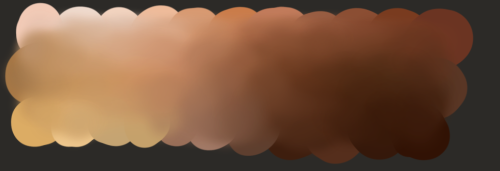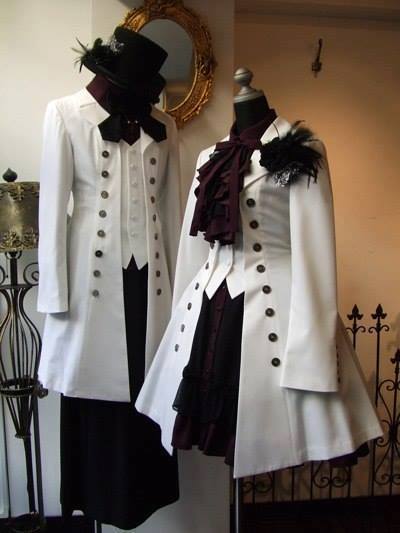Tutorial For Drawing Characters With Down Syndrome!
![First slide. The title reads "drawing characters with Down syndrome". Below that: "myth that I need to get out of the way before the actual tutorial: [caps] people with DS do not look the same [end caps]. They share similar features, but there is no one face that every person with DS has. Most people with DS won't have every single trait, just pick what works for your character." Around that are three actual photos; from top to bottom; a photo of the actress Gigi Cunningham, a Black woman in her 20s posing with her hands on hips; a photo of Zhou Zhou, a Chinese man in a suit conducting an orchestra; portrait photo of Georgie Wildgust, an elderly white man smiling to the camera. Each photo is captioned with the person's name.](https://64.media.tumblr.com/7f4403fd328c284d5bae6ca90eaa6d07/18bf095cd4118d2a-d1/s500x750/6feee60a3e2b462d399245d34ba50f6db14afac6.png)


![fourth slide, called "eyes". text reads "probably the most characteristic feature, so it's important to get right. People with Mosaic Down syndrome (more on it later!) will often have this as one of the few visible traits". top right has a close-up of a blue iris with white dots going around the pupil. It's captioned "these white spots going in a circle are called Brushfield spots. A lot of people with DS have them". Below that is a step-by-step tutorial on drawing eyes. First step focuses on the general shape, with the text reading "there's a lot of shapes to choose from: almond; round; upturned; + more but these are most common". Each of them has a drawing attached. Step two focuses on eyelids. Text reads "pronounced eyelids, both bottom and upper ones. They have a very noticeable crease". There's two pairs of eyes with heavy eyelids under that. Step three shows wrinkles around the eyes. Text: "some people with DS will have creases around the eyes + large bags under the eyes; if you have a simpler artstyle probably skip this one". Attached drawing shows a pair of eyes with wrinkles coming form the upper eyelid on the outer side and bags under the eyes. Step four reads "give them strabismus [many exclamation points]! I know artists are allergic to drawing strabismus if it's not for a joke but crossed eyes are actually awesome [awesome in all caps], (ok not all have strabismus but like half do)". Drawing attached shows a person with DS and strabismus.](https://64.media.tumblr.com/2f7b683cb96ee98791b5e27baca3494b/18bf095cd4118d2a-f1/s500x750/04920f4b30096952d3d5d015dd10e6b840b6be70.png)


tutorial for drawing characters with Down syndrome!
DISCLAIMER... please keep in mind that this is an introductory drawing tutorial and has some generalizations in it, so not every “X is Z” statement will be true for Actual People. it's more of an overview of features that are common in people with Down syndrome, not meaning to imply that every person with DS has all of them 👍👍 thanks
if you draw any characters using this feel free to tag me!!
More Posts from Kunartis and Others
“I have all these OCs! But no story…”
bruh
make a fighting game

It is not the prettiest but here is a little chart I made of skin tones.
The idea is to eye-drop anywhere on the chart to get a unique skin tone instead of getting stuck in the loop of “white, tan, dark”.
Edit in 2021! Due to some (very valid) critique, I just wanted to slap a little edit on this to let people know I’m keeping it up and pinned to avoid being asked where it is on the daily, but very much encourage people to check out other skin tone references. I’m keeping it pinned so it’s easy to find! I appreciate so much the positive feedback this thing has gotten, but more than that, I appreciate the conversations it has sparked and the negative feedback that has come with it, inspiring more people to diversify their art! For better references please check out this really amazing twitter post!

Made an OC challenge thingy! Draw your OC with status effects that slightly alter your OC's base design (red-faced, baggy-eyed, sickly pale, hair a mess... you name it)
More resources can be found here @donut-toast-resources
Resources For Writing Sketchy Topics

Medicine
A Study In Physical Injury
Comas
Medical Facts And Tips For Your Writing Needs
Broken Bones
Burns
Unconsciousness & Head Trauma
Blood Loss
Stab Wounds
Pain & Shock
All About Mechanical Injuries (Injuries Caused By Violence)
Writing Specific Characters
Portraying a kleptomaniac.
Playing a character with cancer.
How to portray a power driven character.
Playing the manipulative character.
Portraying a character with borderline personality disorder.
Playing a character with Orthorexia Nervosa.
Writing a character who lost someone important.
Playing the bullies.
Portraying the drug dealer.
Playing a rebellious character.
How to portray a sociopath.
How to write characters with PTSD.
Playing characters with memory loss.
Playing a pyromaniac.
How to write a mute character.
How to write a character with an OCD.
How to play a stoner.
Playing a character with an eating disorder.
Portraying a character who is anti-social.
Portraying a character who is depressed.
How to portray someone with dyslexia.
How to portray a character with bipolar disorder.
Portraying a character with severe depression.
How to play a serial killer.
Writing insane characters.
Playing a character under the influence of marijuana.
Tips on writing a drug addict.
How to write a character with HPD.
Writing a character with Nymphomania.
Writing a character with schizophrenia.
Writing a character with Dissociative Identity Disorder.
Writing a character with depression.
Writing a character who suffers from night terrors.
Writing a character with paranoid personality disorder.
How to play a victim of rape.
How to play a mentally ill/insane character.
Writing a character who self-harms.
Writing a character who is high on amphetamines.
How to play the stalker.
How to portray a character high on cocaine.
Playing a character with ADHD.
How to play a sexual assault victim.
Writing a compulsive gambler.
Playing a character who is faking a disorder.
Playing a prisoner.
Portraying an emotionally detached character.
How to play a character with social anxiety.
Portraying a character who is high.
Portraying characters who have secrets.
Portraying a recovering alcoholic.
Portraying a sex addict.
How to play someone creepy.
Portraying sexually/emotionally abused characters.
Playing a character under the influence of drugs.
Playing a character who struggles with Bulimia.
Illegal Activity
Examining Mob Mentality
How Street Gangs Work
Domestic Abuse
Torture
Assault
Murder
Terrorism
Internet Fraud
Cyberwarfare
Computer Viruses
Corporate Crime
Political Corruption
Drug Trafficking
Human Trafficking
Sex Trafficking
Illegal Immigration
Contemporary Slavery
Black Market Prices & Profits
AK-47 prices on the black market
Bribes
Computer Hackers and Online Fraud
Contract Killing
Exotic Animals
Fake Diplomas
Fake ID Cards, Passports and Other Identity Documents
Human Smuggling Fees
Human Traffickers Prices
Kidney and Organ Trafficking Prices
Prostitution Prices
Cocaine Prices
Ecstasy Pills Prices
Heroin Prices
Marijuana Prices
Meth Prices
Earnings From Illegal Jobs
Countries In Order Of Largest To Smallest Risk
Forensics
arson
Asphyxia
Blood Analysis
Book Review
Cause & Manner of Death
Chemistry/Physics
Computers/Cell Phones/Electronics
Cool & Odd-Mostly Odd
Corpse Identification
Corpse Location
Crime and Science Radio
crime lab
Crime Scene
Cults and Religions
DNA
Document Examination
Fingerprints/Patterned Evidence
Firearms Analysis
Forensic Anthropology
Forensic Art
Forensic Dentistry
Forensic History
Forensic Psychiatry
General Forensics
Guest Blogger
High Tech Forensics
Interesting Cases
Interesting Places
Interviews
Medical History
Medical Issues
Misc
Multiple Murderers
On This Day
Poisons & Drugs
Police Procedure
Q&A
serial killers
Space Program
Stupid Criminals
Theft
Time of Death
Toxicology
Trauma
Write Tension that isn't just Yelling or Guns
Listen, not all tension is someone holding a knife or screaming “I’ve had enough, Derek!” at a dinner party. Real, edge-of-your-seat tension can be quiet, slow, awkward, and still make your reader grip the page like it owes them money. So here are my favorite ways to sneak tension in like a gremlin under the bed...
╰ Unanswered Questions (That the Character is Actively Avoiding)
Tension isn’t always about what’s said—it’s about what’s not said. Let your character dodge questions, interrupt, change subjects. Let readers feel the silence humming between the lines. + Great for: secrets, internal conflict, emotional gut-punches.
╰ Time Pressure Without Action Pressure
A clock ticking doesn’t always mean bombs. Sometimes it means waiting for a test result. A letter. A phone call. A knock on the door. Tension = knowing something’s coming but not knowing when. + Great for: psychological suspense, horror, relationship drama.
╰ Small Talk That’s Not Really Small Talk
When two characters are talking about the weather, but both are secretly screaming inside? That’s tension. Give one character a goal (say the thing, don’t say the thing) and the other a defense mechanism. Now sit back and watch the discomfort bloom. + Great for: slow burns, rivalries, “we’re not talking about that night, are we?”
╰ Two Characters Who Want Opposite Things But Are Pretending They Don’t
Someone wants to leave. Someone wants them to stay. Someone wants to confess. Someone is acting like nothing’s wrong. Make your characters polite when they want to scream. + Great for: emotionally repressed chaos, family drama, enemies-to-lovers.
╰ One Character Realizes Something The Other Doesn’t
A power shift = instant tension. One person knows the truth. The other’s still talking like everything’s fine. Let that dread slow-cook. Readers love being in on the secret. + Great for: betrayal, secrets, foreshadowing plot twists.
╰ Body Language That Contradicts the Dialogue
They say “I’m fine,” but they’re picking their thumbnail raw. They laugh too hard. Their smile doesn’t reach their eyes. Show the cracks forming. Let the reader sense the dissonance. + Great for: all genres. Especially emotionally loaded scenes.
╰ Echoed Phrases or Reused Words That Hit Differently the Second Time
When a character repeats something someone else said—but now it’s laced with bitterness or grief? Chills. Callback dialogue is your best friend for building subtle dread or emotional weight. + Great for: heartbreak scenes, arcs coming full circle, psychological unraveling.
╰ Characters Performing a Role to Keep the Peace
Pretending to be “the good sibling.” Faking confidence in a boardroom. Playing therapist when they’re not okay themselves. Tension thrives when someone’s holding it together with duct tape and fake smiles. + Great for: internal conflict, layered characterization, slow unravelings.
-
 gayoutofavernus liked this · 2 weeks ago
gayoutofavernus liked this · 2 weeks ago -
 ez2dance2 liked this · 2 weeks ago
ez2dance2 liked this · 2 weeks ago -
 sarahmeeps liked this · 2 weeks ago
sarahmeeps liked this · 2 weeks ago -
 synesthetic-shroom reblogged this · 2 weeks ago
synesthetic-shroom reblogged this · 2 weeks ago -
 sand-scarred-hour liked this · 2 weeks ago
sand-scarred-hour liked this · 2 weeks ago -
 empty-blog-for-lurking reblogged this · 2 weeks ago
empty-blog-for-lurking reblogged this · 2 weeks ago -
 espressowithasidehustle liked this · 2 weeks ago
espressowithasidehustle liked this · 2 weeks ago -
 bombingcornflakes liked this · 2 weeks ago
bombingcornflakes liked this · 2 weeks ago -
 sockdooe reblogged this · 2 weeks ago
sockdooe reblogged this · 2 weeks ago -
 tautlywhimsicalwind liked this · 3 weeks ago
tautlywhimsicalwind liked this · 3 weeks ago -
 live-like-ghibli reblogged this · 3 weeks ago
live-like-ghibli reblogged this · 3 weeks ago -
 live-like-ghibli liked this · 3 weeks ago
live-like-ghibli liked this · 3 weeks ago -
 multifandommaniac reblogged this · 3 weeks ago
multifandommaniac reblogged this · 3 weeks ago -
 mintyswriting liked this · 3 weeks ago
mintyswriting liked this · 3 weeks ago -
 ladyegwene reblogged this · 3 weeks ago
ladyegwene reblogged this · 3 weeks ago -
 converviction liked this · 3 weeks ago
converviction liked this · 3 weeks ago -
 eibongrey reblogged this · 3 weeks ago
eibongrey reblogged this · 3 weeks ago -
 izzbizzfizzwizz liked this · 3 weeks ago
izzbizzfizzwizz liked this · 3 weeks ago -
 snakespirits reblogged this · 3 weeks ago
snakespirits reblogged this · 3 weeks ago -
 monochrome-exorcist liked this · 3 weeks ago
monochrome-exorcist liked this · 3 weeks ago -
 starzoomies reblogged this · 3 weeks ago
starzoomies reblogged this · 3 weeks ago -
 hatenocheese liked this · 3 weeks ago
hatenocheese liked this · 3 weeks ago -
 quarterwaltz reblogged this · 3 weeks ago
quarterwaltz reblogged this · 3 weeks ago -
 randomwizard21 liked this · 3 weeks ago
randomwizard21 liked this · 3 weeks ago -
 whatsinthesmoothie liked this · 3 weeks ago
whatsinthesmoothie liked this · 3 weeks ago -
 listofvoids liked this · 3 weeks ago
listofvoids liked this · 3 weeks ago -
 emperorcandy liked this · 3 weeks ago
emperorcandy liked this · 3 weeks ago -
 aster-is-confused reblogged this · 3 weeks ago
aster-is-confused reblogged this · 3 weeks ago -
 febrieese liked this · 3 weeks ago
febrieese liked this · 3 weeks ago -
 sutulicat reblogged this · 3 weeks ago
sutulicat reblogged this · 3 weeks ago -
 sutulicat liked this · 3 weeks ago
sutulicat liked this · 3 weeks ago -
 meruys liked this · 3 weeks ago
meruys liked this · 3 weeks ago -
 weohgwon-blog liked this · 3 weeks ago
weohgwon-blog liked this · 3 weeks ago -
 eye-devourer liked this · 3 weeks ago
eye-devourer liked this · 3 weeks ago -
 joystickchevr0n reblogged this · 3 weeks ago
joystickchevr0n reblogged this · 3 weeks ago -
 mylittleclony-blastersismagic reblogged this · 3 weeks ago
mylittleclony-blastersismagic reblogged this · 3 weeks ago -
 mists-of-hithlum liked this · 3 weeks ago
mists-of-hithlum liked this · 3 weeks ago -
 helenascorpse reblogged this · 3 weeks ago
helenascorpse reblogged this · 3 weeks ago -
 shatteredtvscreens reblogged this · 3 weeks ago
shatteredtvscreens reblogged this · 3 weeks ago -
 piece-of-carotcake liked this · 3 weeks ago
piece-of-carotcake liked this · 3 weeks ago -
 emotionalsupportdummy liked this · 3 weeks ago
emotionalsupportdummy liked this · 3 weeks ago -
 dragonflame65 liked this · 4 weeks ago
dragonflame65 liked this · 4 weeks ago -
 monstro-abominavel liked this · 4 weeks ago
monstro-abominavel liked this · 4 weeks ago -
 bitch-the-fish liked this · 4 weeks ago
bitch-the-fish liked this · 4 weeks ago -
 siphonophorific reblogged this · 4 weeks ago
siphonophorific reblogged this · 4 weeks ago -
 beetle-ze-bub liked this · 4 weeks ago
beetle-ze-bub liked this · 4 weeks ago -
 rhotic-shwa reblogged this · 4 weeks ago
rhotic-shwa reblogged this · 4 weeks ago











